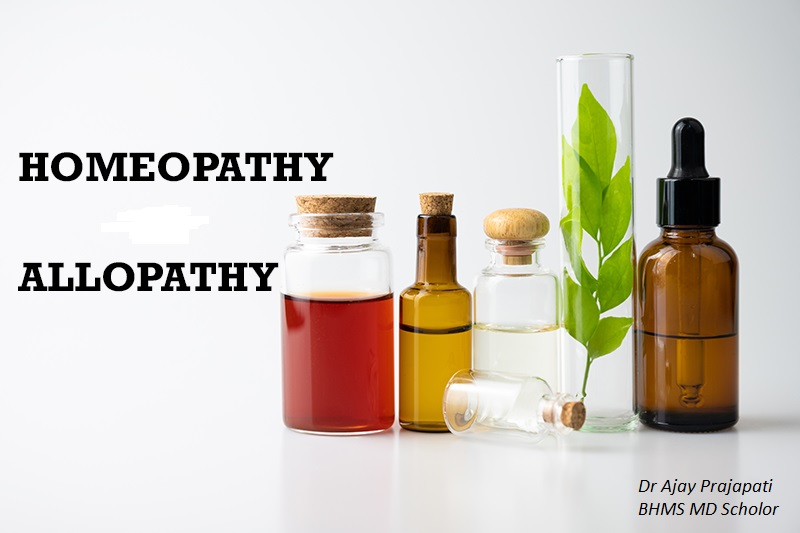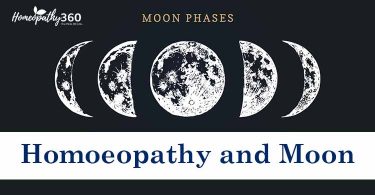
Introduction –
This is the beginning of the real healing science, which will make all the incurable diseases, well within the curative aspect of man. As homeopaths, we have certain strong beliefs about the nature of diseases, how to treat them, what to see in each case, how to take a case, and what to see in But is this accepted by our counterparts from the modern system of medicine?
Usually, we come across 3 kinds of responses
1. Those physicians (the majority of them) who reject Homoeopathy outright as some kind of humbug with no scientific credibility.
2. Some physicians readily accept whatever we say without going into the details of our system and are very cooperative. They believe that Homoeopathy is a mystic science, but capable of giving some magical results in cases where they have failed or are unable to offer much help.
3. There are some physicians who want to know more about Homoeopathy but we are not in a position to explain to them in their language about our beliefs and philosophy.
To overcome this problem we should be more informed about their concepts, only then we will be able to explain to them more convincingly in their language.
Is Homoeopathy Scientific?? Or is it only an art?? Does it have a solid scientific base?? Does it still stand tall and strong in the midst of all the advances in the field of medical research??
This article is an extract of modern medicine books, where almost all concepts of modern medicine somehow relating to homoeopathy concepts.
Followings points what is usually regarded as unscientific or humbug –
- Concept of health as harmonious vital functioning of the body and automaticity.
- Concept of disease as disturbed vital force.
- Dynamics.
- The immediate or proximate cause of the disease.
- Holistic concept and approach.
- Generals are more important than particulars.
- Concept of suppression (and Hering’s law of cure).
- Individualization.
- The action of Homeopathic Medicines is not known.
- The practice of medicine is an art.
- Potentization.
- Law of Minimum dose.
CONCEPT OF HEALTH
According to Homoeopathy point of view
In the healthy condition of man, the spiritual vital force (autocracy), the Dynamics that animates the material body, rules with unbounded sway, and retains all the parts of the organism in admirable, harmonious, vital operation as regards both sensations and functions, so that our indwelling, reason – gifted mind can freely employ this living, healthy instrument for the higher purposes of our existence.
Ref Aphorism 9 Organon of medicine
According to modern medicine point of view
Guyton defines health as homeostasis which is further defined as “Homeostasis is the normal functioning of the human body wherein the body tries to keep all the normal functions and structures of the human body in proper harmonious operations”
Ref Guyton Chapter 1st.
Guyton further states: “The body is actually a social order of about 100 trillion cells organized into different functional structures, some of which called organs. Each functional structure provides its share in the maintenance of homeostasis conditions in the extracellular fluid, which is called the internal environment. As long as normal conditions are maintained in the internal environment, the cells of the body continue to live and function normally. Thus each cell benefits from homeostasis, and in turn, each cell contributes its share towards the maintenance of homeostasis. “Is it not the same thing that we have always been saying?? Just because we use a different terminology -viz; vital force instead of homeostasis does it make us unscientific?
According to Homoeopathy– Hahnemann in organon of medicine *Aphorism 11* says this spiritual, self-acting, automatic, vital force, which is present in every organism … Homeopathy has always maintained that body functioning is automatic.
According to Modern Medicine– This reciprocal interplay (in homeostasis) provides continuous automaticity of the body until one or more functions lose their ability to contribute to their share of function.
Guyton view – When this automaticity is lost or homeostasis is disturbed all the cells of the body suffer (and not a part). Bhende and Deodhar pathology: Moderate dysfunction leads to sickness, extreme dysfunction leads to death.
CONCEPT OF DISEASE
According to Homoeopathy point of view
When a person falls ill , it is only this spiritual , self-acting ( automatic ) vital force , everywhere present in his organism , that is primarily deranged by the dynamic ( Materia pecans ! ) influence upon it of a morbific agent inimical to life.
Ref Aphorism 11 Organon of medicine
According to modern medicine point of view
Disease has been described in the pathology books as “an uncompensated disturbance in homeostasis” or misfired self-regulation”. Thus disease may manifest itself, superficially structural changes confined to certain cells, tissues or organs, and the arresting symptoms or signs maybe due to these local changes. Yet, in the language of the physiologist, “every sick person is essentially a functionally deranged organism”
Explanation – When a person falls ill , it is only this spiritual , self-acting ( automatic ) vital force , everywhere present in his organism , that is primarily deranged by the dynamic ( Materia pecans ! ) influence upon it of a morbific agent inimical to life it is only the vital force, deranged to such an abnormal state, that can furnish the organism with its disagreeable sensations, and incline it to the irregular processes which we call disease; for , as a power invisible in itself , and only cognizable by its effects on the organism , its morbid derangement only makes itself known by the manifestation of disease in the sensations and functions of those parts of the organism exposed to the senses of the observer and physician, that is, by morbid symptoms, and in no other way can it make itself known.
The Morphological changes are diagnosis, for giving a label. But their real significance depends on the amount of light they can throw on the disordered functions, their nature and the manner in which they have been brought about. (This may sound as if it were given in homoeopathic books but it is given in the books on general pathology by Bhende and Deodhar . In the study of a disease the defaulting organism as a whole must come under survey. (Bhende Deodhar) is further stated that: “Disease has also been defined as a disturbance of the biological equilibrium between the organism and the external environments. As far as the organism is concerned, it is a disturbance of the state of homeostasis of the internal environment. In this manner the disease ceases to be an affliction visiting the body from outside, even when caused by a bacterium invading tissues from the external environment.
If an injurious agent upsets the equilibrium the organism will try to restore it through a series of homeostatic mechanism it reacts to the injury. (Again the similarity to Homoeopathic concepts of health and disease)
Thus the total changes seen in a disease are not only the changes of injury but also include the changes produced by the reaction to injury (this concept is still hypothetical).
CAUSE OF DISEASE
According to Homoeopathy point of view
In Homoeopathy we consider 3 main causes of disease acting on the human body
- Maintaining the cause of the disease (aphorism7)
- The immediate or proximate cause of the disease.
- Miasm as the fundamental or predisposing cause of diseases (Aphorism 5):
Useful to the physician in assisting him to cure are the particulars of the most probable exciting cause of the acute disease, as also the most significant points in the whole history of the chronic disease, to enable him to discover its fundamental cause, which is generally due to a chronic miasm.
According to modern medicine point of view
The preventive and social medicine talks of the maintaining causes of the diseases like nutrition or causes of the diseases like nutrition or environmental pathology books whereas if we see in the environmental pathology books they say there are two types of causes necessary for the disease to develop :
- Initiating causes or immediate causes without whose prevalence the disease cannot start.
- Predisposing causes which by themselves cannot cause disease. They prepare the soil for initiating causes, usually by a prolonged preliminary action. In other words they confer susceptibility on bringing an individual either by bringing him in contact with the initiating causes or by lowering the resistance of the individual against them. To explain this an example is also given that tuberculosis is disease said to be caused by mycobacterium but this cannot affect a person until the resistance of person is significantly reduced.
HOLISTIC CONCEPTS
According to Homoeopathy point of view
Homeopathy maintains that man should be considered as a whole as it is the whole organism that is affected not a part as given in “Theory of chronic disease” and Aphorism 6 and 7 “portrait of disease”.
According to modern medicine point of view
The Gray’s anatomy is distressed by the separation and division of the body into different fields which it mentions as the compartmentalization of different branches of medicine. To exactly quote Gray’s anatomy text; it says : “Unfortunately and perhaps particularly in the medical sphere, the compartmentalization session of anatomy into several disciplines or subjects – with attendant titles ,individual chairs and even separated departments – tends towards ” disintegration
General Pathology Books say: In disease the organism as a whole reacts to the disturbance or injury. The abnormalities produced in the structure and function of cells during the course of the reaction can occur in any time or organ of the body but have an essentially similar pattern in different tissues. Further different causes can produce more or less the same effects, though the mechanism of production may not be identical. Such changes are described as basic or fundamental and they are the common denominators of the diseased state.
INDIVIDUALISATION CONCEPTS
According to Homoeopathy point of view
Aphorism 83 in organon of medicine where Hahnemann talks of individualizing examination of each cases.
Aphorism5 he says: the most significant points in the whole history of the chronic disease, to enable him to discover its fundamental cause In these investigations, the ascertainable physical constitution of the patient (especially when the disease is chronic), his moral and intellectual character, his occupation, mode of living and habits, his social and domestic relations, his age, sexual function are to be taken into consideration.
According to modern medicine point of view
The embryology text says: Embryology has no explanation for the unfailing uniqueness of each individual – face / finger prints, pattern of sulci and gyri on the brain or the veins on the dorsum of the hand. If basically the same processes work to shape all the human beings they should all look alike but they never. All human diseases can be considered to result from an interaction between an individual’s unique genetic makeup and the environment. Now after the human genome project the authorities of the modern medicine have started saying that every individual might require a different medicine.
CONCEPT OF MINUMUM DOSE
According to Homoeopathy point of view
In Homeopathy we don’t claim to cure diseases with our medicines. We just stimulate the (immune) system to react and cure itself.
According to modern medicine point of view
To treat diseases with physiological doses in order to overcome or suppress the external / internal disease producing / causing agent. As there is a basic difference in the concept of the two systems, we don’t expect to find the concept of minimum dose or that of potentization in the books of modern medicine.
Books Referred: 1. Organon of Medicine: Dr. S. Hahnemann 2. Theory of Chronic: Dr. S. Hahnemann 3. Textbook of medical Physiology: Guyton and Hall4. Gray’s Anatomy5. General Pathology: Bhende and Deodhar6. Harrison’s Principles of Internal Medicine 7. Physiological Materia Medica: W. Burt 8. Allen’s Keynotes 9. Clinical Materia Medica: EA Farrington 10. Textbook of Immunology: Abbas 11. Principles of Embryology: Bhatnagar 12. Comparative Materia Medica: Gross
Written By Dr Ajay Kumar Prajapati
MD Scholar (Organon of Medicine), Batch- 2020-2021
Government Homoeopathic Medical College & Hospital, Bhopal. M.P





